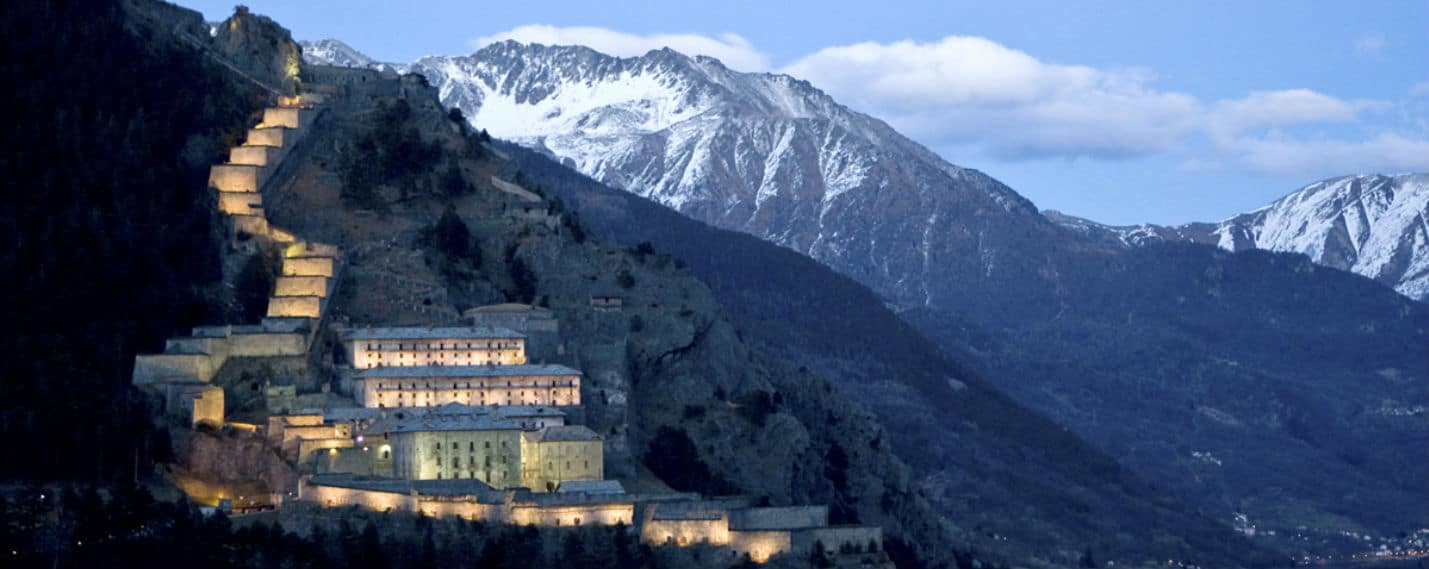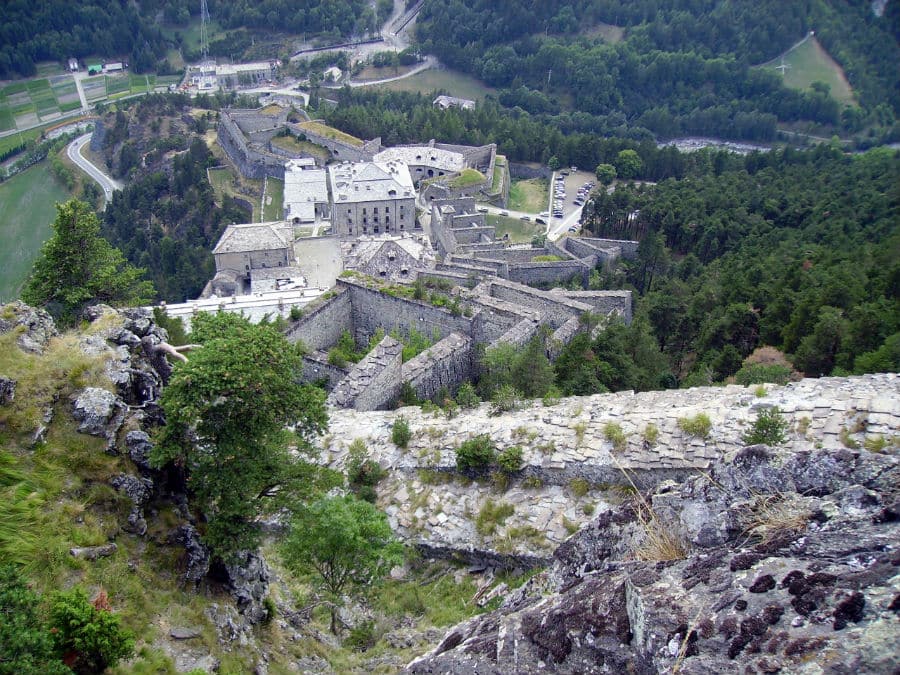The Fort of Fenestrelle made his entry into history in the autumn of 1727. The engineer Ignatius Bertola, on request of the King Vittorio Amedeo II, presented an ambitious project: a Great Wall, studded with more fortified structures, placed in the barrier of the valley of the Chisone against foreign invasions. Its architecture develops on the ridge of the mountain for a length of over 3 kilometers, with a total surface is of 1.35 million square meters and a height difference between the first and the last body of works of about 600 meters. The construction work lasted for over a century. The designation of Forte is not entirely accurate because it is in reality a fortified complex composed of eight defensive works, some as large as the Fort St. Charles, and other small as the Ridotta Santa Barbara, but each of them had a specific role in the strategies of defense.
All the structures are connected between them through paths both internal and external, but especially through the note “Covered Staircase”: 4000 steps, protected by thick walls two meters, that climb up on the slope of the mountain for more than two kilometers. The fort was always a military garrison and constantly maintained its function of sentinel and defensive bulwark, but as with all the fortresses, also took place the delicate task of State prison. The rooms of the palaces were often used for holding cells for characters of prestige, while the cameroni barracks entertained the so-called common prisoners: people condemned for crimes various, military guilty of serious transgressions and, not to mention a thousand soldiers of the conquered the Kingdom of the two Sicilies which remained there about a month before being inserted in the nascent Italian Army. After the Second World War the strong underwent a total abandonment. Today the Forte di Fenestrelle is a unique monumental complex is open to the public.
info@fortedifenestrelle.it



